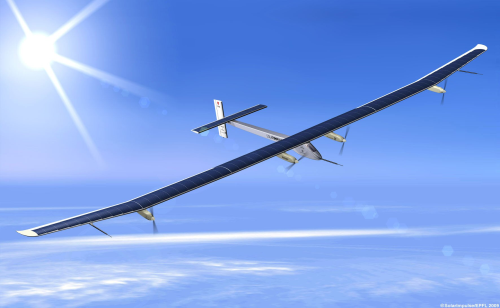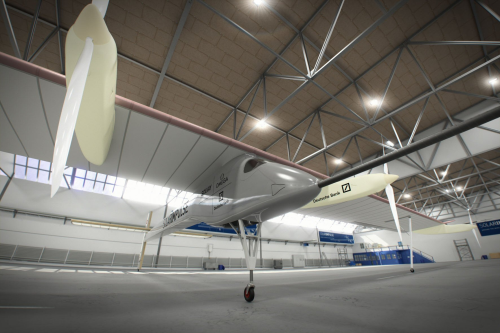

With its 63.4 m wingspan and take off weight of just 1600 kg, the HB-SIA makes extensive use of carbon fibre/honeycomb sandwich composites for the fuselage in order to achieve the required level of strength, rigidity and weight saving characteristics. Similar in size to that of a Boeing 747 400, the wings of the HB-SIA feature 120 carbon fibre ribs at 50 cm centres that both create the aerofoil shape and support the upper and lower wing skins.
The craft’s four propellers are driven by four electric motors that are powered by nearly 12000 mono-crystalline, silicon cells embedded in the upper skin of the wing. During the day, the silicon cells will also charge a series of lithium-polymer batteries thereby allowing the HB-SIA to fly at night.
The aim of the Solar Impulse project, which was started in 2003, is to produce an aircraft entirely powered by solar energy that will take off and fly, both during the day and at night.
The HB-SIA is the first prototype of the Solar Impulse project. Its mission is to demonstrate the feasibility of a complete day-night-day flight. After fine-tuning on the ground, the aircraft should make its first test flights between now and the end of 2009.
The data gathered during the test flights of the HB-SIA will be used to develop and build a second aircraft, the HB-SIB, whose 2012 mission will be to circumnavigate the word in five stages.
Chairman and initiator of the project is explorer/scientist Bertrand Piccard, who made the first non-stop, round the world balloon flight. The project CEO is engineer and ex-fighter pilot André Borschberg.



